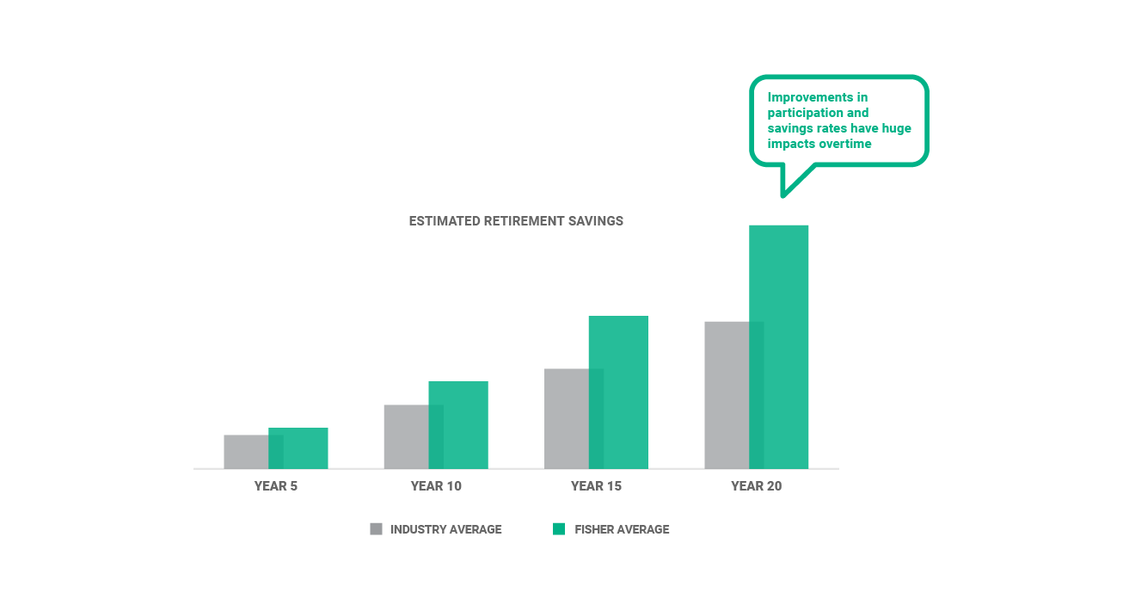Business 401(k) Services / 401(k) Plan Optimization
The Most Common 401(k) Investments
A 401(k) is a powerful tool to help you and your employees save for retirement, but it’s a tool that requires some smart planning. Take, for example, the investments in a 401(k) plan. As an employer, part of your responsibility is to offer a comprehensive lineup of investment options for your employees to choose from. The most common investment options in a 401(k) plan are stocks, bonds, and cash.
For the vast majority of employees with a 401(k) account, the bulk of their investing in stocks, bonds, and even cash will happen via different kinds of funds, including mutual funds. A mutual fund is a pool of money from several unrelated investors. This money is invested into a portfolio of different stocks, bonds, or money market securities. The term “fund” can be applied to most if not all of the investment options you include in your 401(k) plan—that’s why it’s referred to as a “fund lineup.” In your company 401(k) plan, you will want to include a variety of investment options that will allow your employees to properly diversify their 401(k) account, regardless of their age or their investment goals. Here are some of the most common types of funds in a 401(k) plan:
401(k) Investment #1: Index Funds
There are some types of funds that perform special functions within a 401(k) portfolio, like “index funds.” These funds are meant to act as a broad representation of something like the S&P 500, and generally reflect the larger movements of the stock market. Rather than attempting to “beat” the movements of a market, index funds offer employees a good investment option that is passively managed in order to keep up with the bigger trends in the market.
401(k) Investment #2: Target Date Funds
Many 401(k) plans offer a “target date fund” that automatically adjusts its investment strategy based on a pre-set date, like the retirement date of your employee investing in the fund. Also known as “age-based funds,” these investments generally take on a more stock-based strategy earlier on in an employee’s career and will transition to a strategy with lower volatility as the investor draws closer to retirement. Target date funds offer employees an automatic way to make sure they are adjusting their investment strategy over the course of their careers.
401(k) Investment #3: Bond Funds
A bond is a fixed-income investment representing a loan made by an investor (like an employee in a 401(k) plan) to an entity like the U.S. Treasury, which offers a specific amount of money as a return on investment. When a corporation or a government body needs capital for a project, they will issue bonds publicly. In a 401(k), some of the fund options you will want to include are bond funds. They represent an important tool for balancing any retirement portfolio. Because they offer a defined amount of return, a bond fund investment can give employees an investment option that will grow their savings at a predictable rate.
401(k) Investment #4: Stock Funds
Stocks represent ownership of shares in a company, which grants the owner a representative share in the company’s assets and earnings. As the company increases in value, so does the stock—which means an increase in savings for any employee who invests in stocks through their 401(k) plan. Most commonly, stock investments in a 401(k) are offered as funds made up of stocks.
There are many ways to categorize stock funds. One way is by the size of the company, which is represented by “market capitalization.” Stock funds made up of investments in very large corporations would be considered “large cap,” while the funds made up of smaller companies is represented as “small cap.” Stock funds are also classified based on the industry they represent—“tech stocks” are a popular category of investments in growing tech companies, for example. You may see some stock funds that are labeled as “domestic,” meaning they represent American companies. “International” funds, likewise, represent foreign companies.
Unlike bonds, the value of stocks fluctuates with the market. While stocks may have more short-term potential for ups and downs than bonds, the return on investment with stocks tends to “smooth out” over long periods of time. In fact, stocks outperform bonds 100% of the time over rolling 30-year periods!
401(k) Investment #5: Cash
Finally, you may want to include investment options that allow your employees to keep a portion of their savings in cash, which often take the form of money market funds or stable value funds. Money kept as cash doesn’t have the same ability to grow as money that’s invested, but cash plays an important role in a retirement account for individuals who are closer to retirement.
The Bottom Line: Give Employees the Investment Options They Need
In any 401(k) fund lineup, it’s important to get a healthy mix of investments in different types of funds for your employees to grow their money and reach their retirement goals. Provide your employees with a diverse lineup of investment options to match any investing style and give them the tools they need to succeed.

See our Business 401(k) Insights
Resources and articles to help your business with retirement plan support, optimization and administration.





